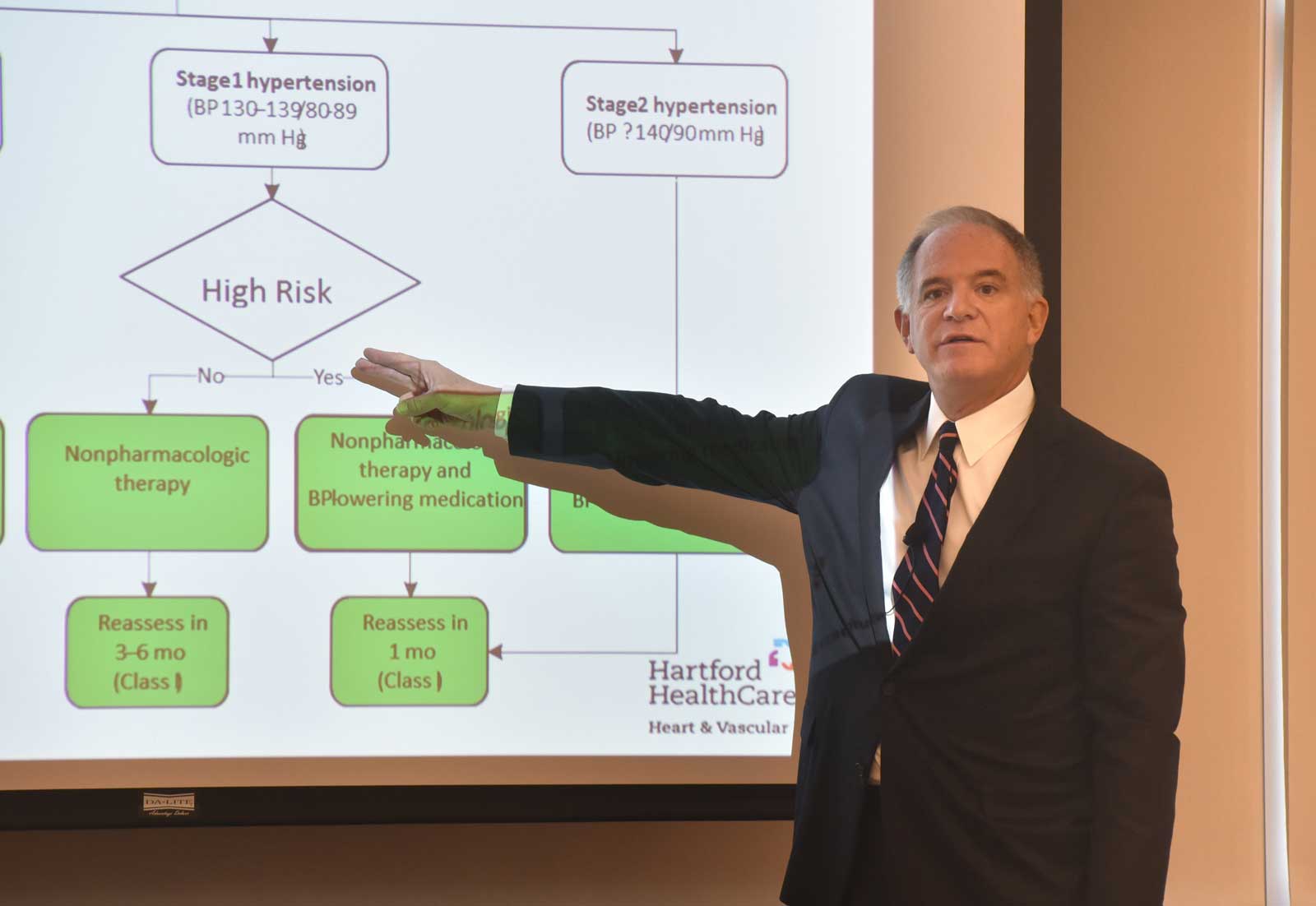<< Back
Lower Your Blood Pressure With These Lifestyle Changes

February 15, 2018
Olympics fans know him as the Flying Tomato, a snowboarder who defies gravity on the halfpipe and looks rather dapper draped in gold medals, but as a child Shaun White was a medical challenge.
Born with a heart condition called Tetralogy of Fallot, which comprises four congenital heart defects, White underwent three separate surgeries. His recovery and, in fact, the athletic prowess he has achieved since, is testimony to the power of cardiologists and science to repair the defects and restore him to a full life, according to Dr. Howard L. Haronian, chief medical director and vice president of the East Region of the Hartford HealthCare Heart & Vascular Institute.
“We tell people that you are part of the solution,” Haronian said at the second annual Workplace Health Symposium co-sponsored by Hartford HealthCare Heart & Vascular Institute and the American Heart Association (AHA).
The event is designed to draw attention to the importance of wellness in the workplace, which includes the AHA Workplace Health Achievement Index. Haronian, the keynote speaker, addressed new blood pressure guidelines that serve as one measurement of wellness.
“Hypertension is the nexus for a lot of healthcare problems,” he said, adding that the new guidelines lowered the levels by approximately 10 points so that people can begin to work with their healthcare provider to address the issue earlier. “We need to assess risk so we can decide what sort of treatment therapy to follow.”
Depending on your blood pressure numbers – which he says should be followed outside of the doctor’s office to ensure they aren’t artificially elevated due to “white coat anxiety” or fear of the doctor – you can opt for lifestyle modification to improve them.
These include:
- Losing weight. Haronian said adults can expect to drop one point in blood pressure for every pound lost.
- Eating a healthy diet. A diet rich in fruits, vegetables, whole grains and low-fat dairy is recommended.
- Putting the salt shaker down. The goal is less than 1,500 milligrams of salt a day, but even just reducing your intake by 1,000 milligrams will help.
- Eating more potassium. Bananas and potatoes can help you reach the daily goal of 3,500-5,000 milligrams.
- Exercising. Though aerobic and strength training are the best for your heart, even opting to park farther from the door or taking the stairs instead of the elevator will help. Keep your exercise regular, too, for the best results.
- Watch your alcohol intake. Haronian says the body is “agnostic to alcohol,” meaning it doesn’t matter if you drink wine, hard liquor or beer. But women should drink no more than one a day, and men no more than two.
Anyone with blood pressure numbers that are consistently elevated or in the hypertension range will likely need lifestyle modifications and medication to help keep them under control.
“People have to be motivated to make changes,” Haronian says, adding that having a nutritionist in house helps his patients, as do community programs by the AHA.
For more information on the Heart & Vascular Institute, click here.